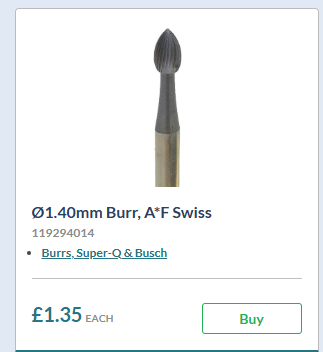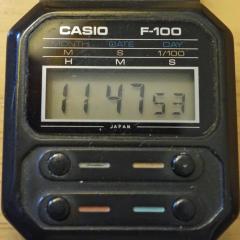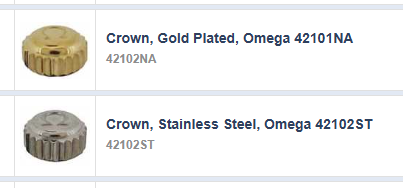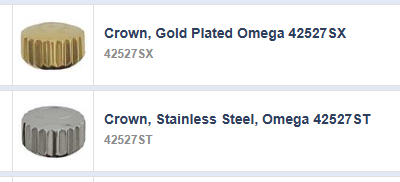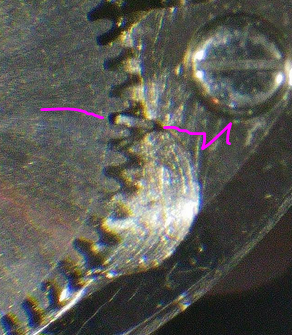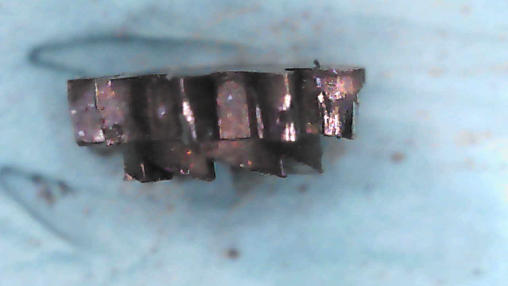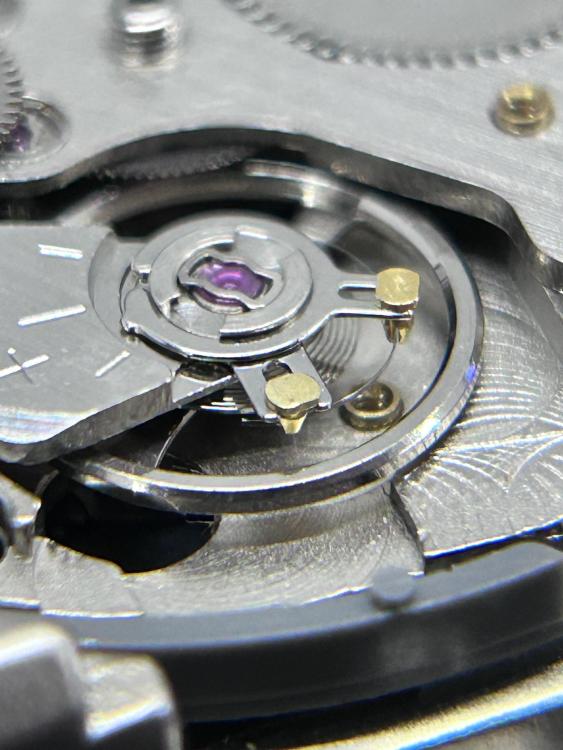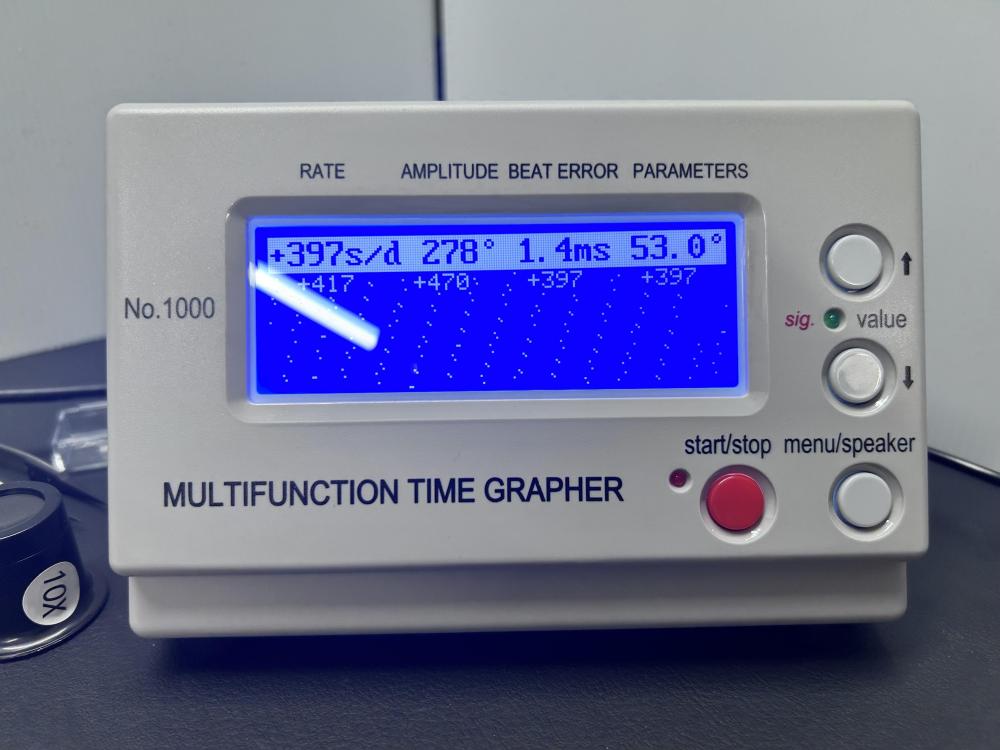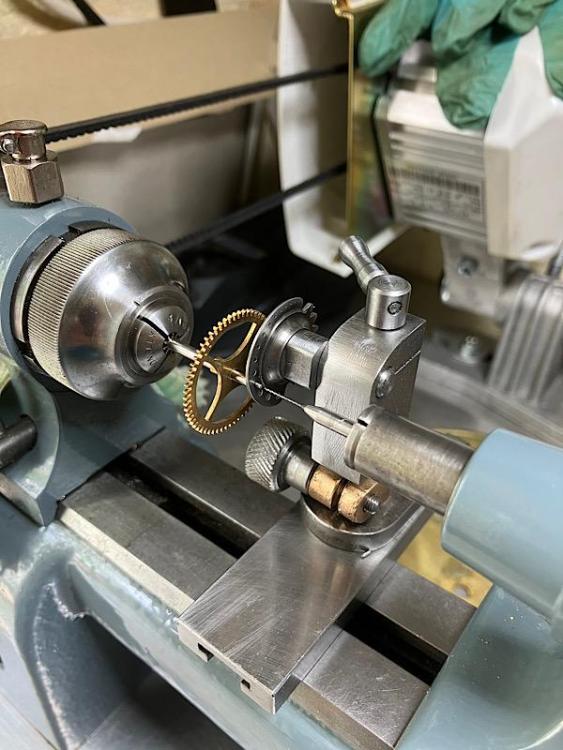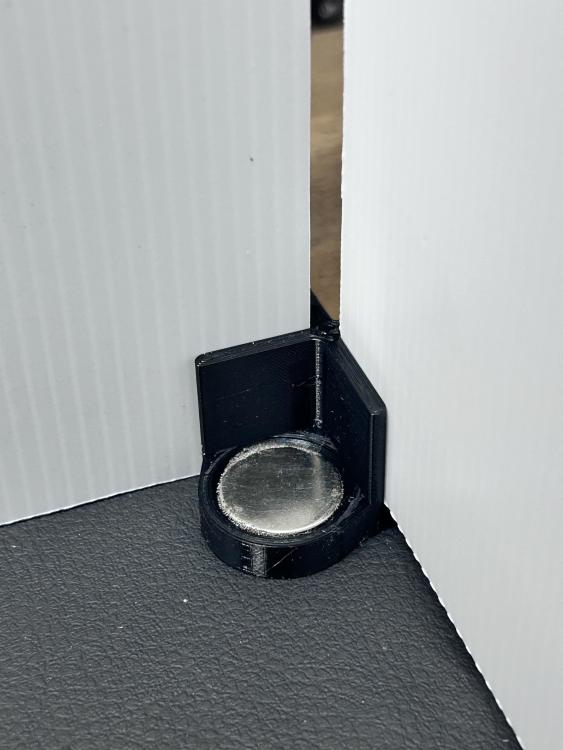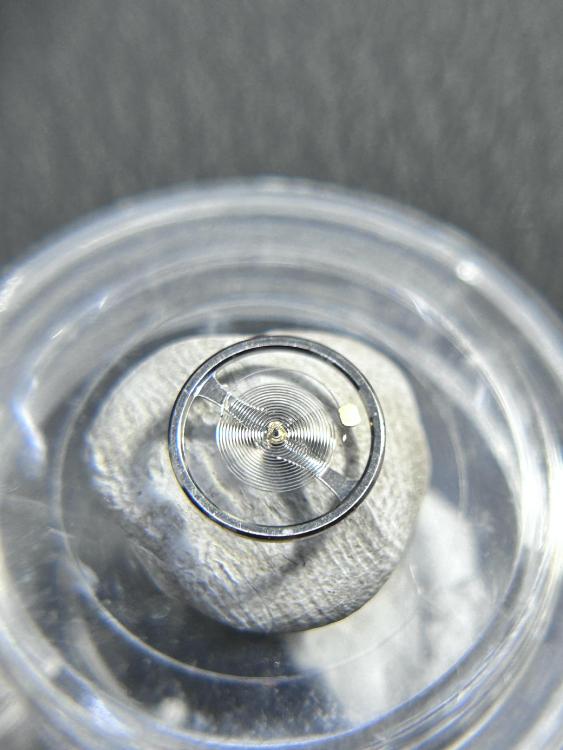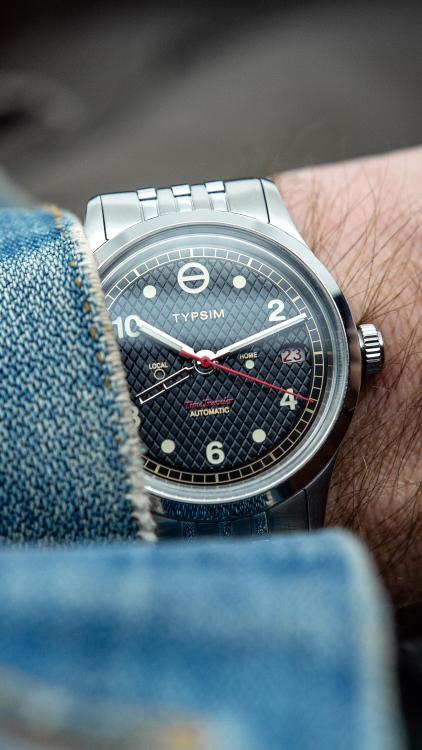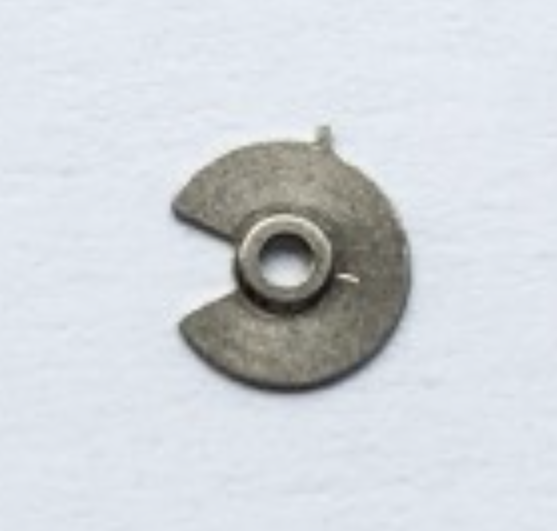Leaderboard
Popular Content
Showing content with the highest reputation on 01/18/25 in all areas
-
3 points
-
That reminds me Rich, I use a similar tool to deepen the hole for dial feet*. I'll try it on countersinking and deburring *If I cut the hole deep enough with my dial feet cutter tool, the spike in the middle marks the dial. So I use it to start the hole, then was looking for something to deepen the cut. I tried all sorts of grinding wheels on the Dremel but all were hard to control (stone wheels) or cut too aggressively (diamond). I found this cutter is perfect. Small and easy to control, and leaves a smooth surface. And cheap3 points
-
If you've ever watch Joe " The nekkid watchmaker " you’ll notice that he always adds lubrication to a few of the teeth. Its not the sort of tooth meshing that interferes with power delivery, and unlikely to spread anywhere. Ah just looked again at the damage, its the clutch teeth that Joe lubricates. Is it possible to fit the crown wheel upside down on this movement. Cogs perpendicular to each other need bevel cut to mesh together.3 points
-
Movement is now running on the bench with its new suspension. It has been running for almost 5 hours now. Time for me to finish the reassembly (dial, hands, base and suspension shield,) and check on the timekeeping. Thank you @Dell for your advice.3 points
-
You shouldn't use LR batteries for watches as they are alkaline batteries and have a tendency to leak. You should use SR batteries instead, which are silver oxide.2 points
-
I think these would be used for hole sinks. Once the screw hole for threading is cut the pin on the cutter acts as a guide in the hole and the cutter rotated to form a recess for the screw head. I can’t seem to remember at the moment the proper name in machinist speak, getting old sucks It is not a counter sink but for recessing cheese head screws. Tom2 points
-
2 points
-
1 point
-
It's very common to see Seikos with a balance that wobble a little. Seikos have a very delicate balance wheel and are placed too close to the edge of the movement. The balance can get damaged from clamping the movement carelessly in certain types of movement holders. Poor amplitude can be due to a lot of factors, like dirty jewels, worn out bushings, weak mainsprings, distorted hairsprings, dirty pallet jewels.1 point
-
Well on this picture it is clearly seen the hairspring is bent up. Probably the other side goes down and rests on the balance arm. The other thing to check is if there is some axial free play of the balance. OP, just replacing parts without understanding what is needed for their correct function in watchmaking doesn't work. The mechanical watches are not made with 'plug and play' parts. So if You replace part and the movement doesn't work, You start diagnosing as if it is movement with unknown problem. You need to be prepared to discover any problem.1 point
-
Yes you did explain the answer John , my comment was in relation to Richard's question.1 point
-
this is becoming a really confusing conversation because I thought I already explained the answer that he was seeking? But I can see there seems your problem here like is anyone found where the click went to? It went flying away and was never seen again? oh wait is a problem there is no screw for the click as there is none sort of notice that little piece of metal between my two lines? That's the click and spring. The release it the way release any other click which is to wind the crown it will move away from where it is and was something pointy like your tweezers you can hold it back and release the power. But maybe I'm confused with what everyone else is confused about?1 point
-
The amplitude readings of 140 seems more or less correct on the video. The balance wobble is just balance not trued after staff replacement or balance bent for some reason (not proper handling). But it (wobble) is not the reason for lo amplitude.1 point
-
Hm, the chipped entry stone might be a problem. See, evaluation of the escapement adjustment correctness by position of tooth edge against the edge of rest surface of pallet in banking position is not correct. This depends much on correct position of banking pins, and they are easy to bend. Wat You really need to check is if there is correct locking (the drop lock exists and is reliable) on every tooth of the wheel an on both pallet stones. When tooth moving on the chipped pallet impulse surface, it will leave it sooner as the surface is shorter. Thus the next tooth can drop not on the rest surface, but directly on impulse surface of exit pallet. Well, when this happens, the sound is different and I didn't hear such sound in the videos, but for sure even if the locking is still present, some amplitude is lost due to the chipped pallet. You have to better adjust the balance position by collet rotating, but deal with the hairspring position adjustment first. Every change of the hairspring position will change the 'beat error', so the beat error adjustment is the last adjustment to do on the hairspring1 point
-
The big balance is for 18000 movements while the small is the 21600 but without knowing what other parts are fitted you can't be sure. It's press fitted onto the hub as a normal hand would be so you need to carefully lever it using the 2 slots.1 point
-
Absolutely, and it shows with all desirable clarity that we, whose ancestors were Vikings, have enormous advantages over you Christian heathens Furthermore, I am old enough to be blessed with a Viking name (which no English speaker can pronounce) that means "son of heroes."1 point
-
Rollersinks....a screw may need a chamfered seat to sit flush. Or a bearing might perform better if it has an oil sink added to it. I think they come in two versions, one that cuts and one that burnishes, the wheel profile would determine that H. Good price IMO They also deburr after reaming a wider hole for a jewel setting. Or closing a hole ---- peen- broach- deburr.1 point
-
Today I replaced the winding pinion in my 1940s Bulova Pocketwatch. The old one was so worn that in some places it was slipping under rather than turning the crown wheel. This wear got me thinking. I don't usually lubricate the teeth of the winding pinion, but should I? A little bit of Moebius 9504 or similar might reduce the wear on both this and the crown wheel.1 point
-
1 point
-
Yeah. I took it off in readiness for the new one but let me pop it back on and snap some pics. In doing so this time the stud snapped back in and I have a fantastic swing of the balance wheel. I wonder if last time I hadn’t quite gotten the spring within the fingers of the regulator. Should I try and put the pallet fork back in and see if it is improved on the timegrapher? I don’t appear to have any coils touching again. Moving the regulator doesn’t seem to affect the spring too much. However I think the pins are touching on the inside a bit. I took a photo of the stud in its natural position before I clicked it in. I put the pallet fork back in and whoa, I have my amplitude back! Beat error is still massive but I haven’t touched the regulator fingers yet. The issue is definitely in the hairspring. I’ve been able to play around with a few things and I’m noticing I can get the and to bring the beat error down if I remove the effect of the regulator pins as much as possible. But the rate is way off which makes me think there is still an issue with the spring somewhere. I was going to let all the power down and see if I can get the spring centered in the regulator pins. Is that a good move or is the rate way too far off and I need to look elsewhere? Whilst it’s not working properly I’m actually really pleased I’ve at least been able to get the amplitude back.1 point
-
1 point
-
Can we see the balance fitted to the cock and in the watch. If there is a twist or a bend just where the stud or the collet is, then this is when it will be most visible.1 point
-
1 point
-
I'm interested to hear how you get on. Yes, the spring is a bit mangled, but it should be fixable. Read up on hairspring manipulation before you start rather than after you make a mess (like I did with my first one).1 point
-
You could also put it in a small jar with some type of one-dip and place that on the demagnetizer. The fluid dampens it's movement. Cleaning and demagnetizing in one go.. An uv-light source will light those up nicely. Makes them much easier to find.1 point
-
Updates. Here is my cleaned up work space. Trying to make some room for my feet so it’s a bit more comfortable. I may even move some items to down there at the back like my US cleaner. The base is faux leather. I thought this was best as it wouldn’t snag any parts. I really wanted green but they didn’t have any. As you can see the sides are coreflute and held together with 3D printed clips. The corners have magnets to hold them to the metal welding plate. The gaps in the corners are also going to be covered with these long connectors so that the only place an item can go is 700mm in the air over the top, or forwards. The balance is also looking not too bad as far as my uneducated eye looks. I haven’t done anything to it, it’s just settled this way and it looks pretty even to me and the sticky coils don’t appear to be there anymore unless I am missing something obvious (again!). Still begs the question why they were stuck together. Should I demagnetise or give it a swish in some IPA or Shellite?1 point
-
I hv a set similar to this too. Mine has a handle included in the set. I'm not sure if I'm using it for the intended purpose but I use it to cut down prefabricated brass bushes after pushing the bush into the plate. Especially when replacing the bush of the centre wheel.1 point
-
I'm afraid you're not giving us much to go by. There are a lot of possible causes. So, instead of troubleshooting/guessing the assembled movement, my advice would be to completely disassemble, clean and then do your assembly and inspections again using function groups. Work methodical. Step by step until you are at the point where you can put the balance in and it starting up is expected and not a pleasant suprise.1 point
-
I think you should do a free oscillation test. It's hard to be sure but it looks like the balance might be touching the underside of the balance cock. Rotate the balance cock 180 degrees then count the oscillations when you release it. You're looking for 100 or more full oscillations. If it stops after less than that (and assuming the balance jewels are clean and pivots intact) then the balance is probably touching/rubbing on something.1 point
-
I’ve taken all the feedback on board and been very busy with a few things. 1. A massive garage cleanup so I can make a better work bench for watch repair 2. a better workspace that hopefully stops me losing so many parts Once I have that all done I will share some images and get back to checking the hairspring.1 point
-
1 point
-
just for future reference it's why it's always nice to post some good general pictures and of course all the numbers of whatever you're working on because often times people will see something like this and recognize the problem. Where there is literally thousands of different numbers of watches and unless you worked on this exact watch you won't know what problems it can have. then in case you're curious I was going through my Omega technical documentation and other than acknowledging the existence of the spring there is no reference at all of the consequence of basically this is a very problematic part as based on discussion groups. for the most part Omega technical documentation is interesting in that they typically do not have basic service manual's. Even if they have anything related the servicing they usually don't spell out exact servicing they may specify oils in specific locations but they basically assume you're a professional watchmaker you know how to service their watch. Then the other minor problem the technical is supplemental information a lot of times the watch companies had supplemental stuff for things like lubrication or other things. Then Omega has supplemental information for groupings of calibers that have common issues but nothing for the vintage watches that I'm aware of. Oh and if you want to have some fun ask the group if you should lubricate the spring or not?1 point
-
The problem with a lot of these is you don't know what you're getting.1 point
-
1 point
-
Yes it is possible that wrong escapement depth to be reason for fast working and shortening of the swing in one of directions. This is when there is no locking (here it is known as drop lock) in one of directions of pallet fork movement. For sure it is situation with lo amplitude and no timegrapher is needed to see what is hapening. Another possibility is hairspring shortening (touching) when swinging balance to one direction, this is problem of the balance/hairspring as resonator. Thou it seems that the hairspring doesn't touch in static, but actually when the balance is rotated, then it begins to touch. Another possibility is the balance arm (one of it's halves) to touch something and this brings hard limit of the balance movement in one direction. Such thing can be the head of the pallet fork cock screw if it sits higher than cock surface (it can happen when wrong screw is used) or similar mechanical reason. It will be best if You make video of the movement working in dial down position and may be of the free oscillations test.1 point
-
1 point
-
1 point
-
I get that: it's a significant investment. But regarding utility, until I got a staking set I had no idea how much I would use it.1 point





